Photographer Karim Iliya (Media Studies class of 2012) was in Reykjavik, Iceland when he called me in January. A few weeks later he was in Hawai’i. Then he was on a boat off the coast of Dominica, sending me photos of sperm whales he was swimming with, while talking about his plans for a trip to Palau to photograph jellyfish. But the most interesting place Karim hopes to visit this year won’t even be on this planet — it’ll be the moon.
A world-traveling photographer, Karim, 33, has been featured in National Geographic and BBC Earth for his breathtaking environmental photography. He is one of eight artists selected to join Japanese billionaire Yusaku Maezawa, on a week-long orbit around the moon with the dearMoon Project.
Maezawa, 47, a former rock-band drummer and an online fashion retailer, bought out a SpaceX chartered flight for an undisclosed sum in 2018, and provided an open invitation to creatives all around the world to join him. Karim heard of the project from his friend Eva Krchova, whom he dated while attending the University of San Francisco. Eva spoke about Karim’s dreams at USF. “We were sitting in a tree and we were talking about dreams,” she says.
“And I said I would like to make the Olympics…” says Eva.
“And I told her that one day, I would take a photo of the Earth from the perspective of the moon,” says Karim.
“And I was just like, ‘You’re crazy,’” says Eva. Ten years after that conversation, and during the pandemic, she heard about the dearMoon Project and knew Karim would be perfect for it. “I was like, this is calling Karim’s name,” she says. “And the rest is history.”
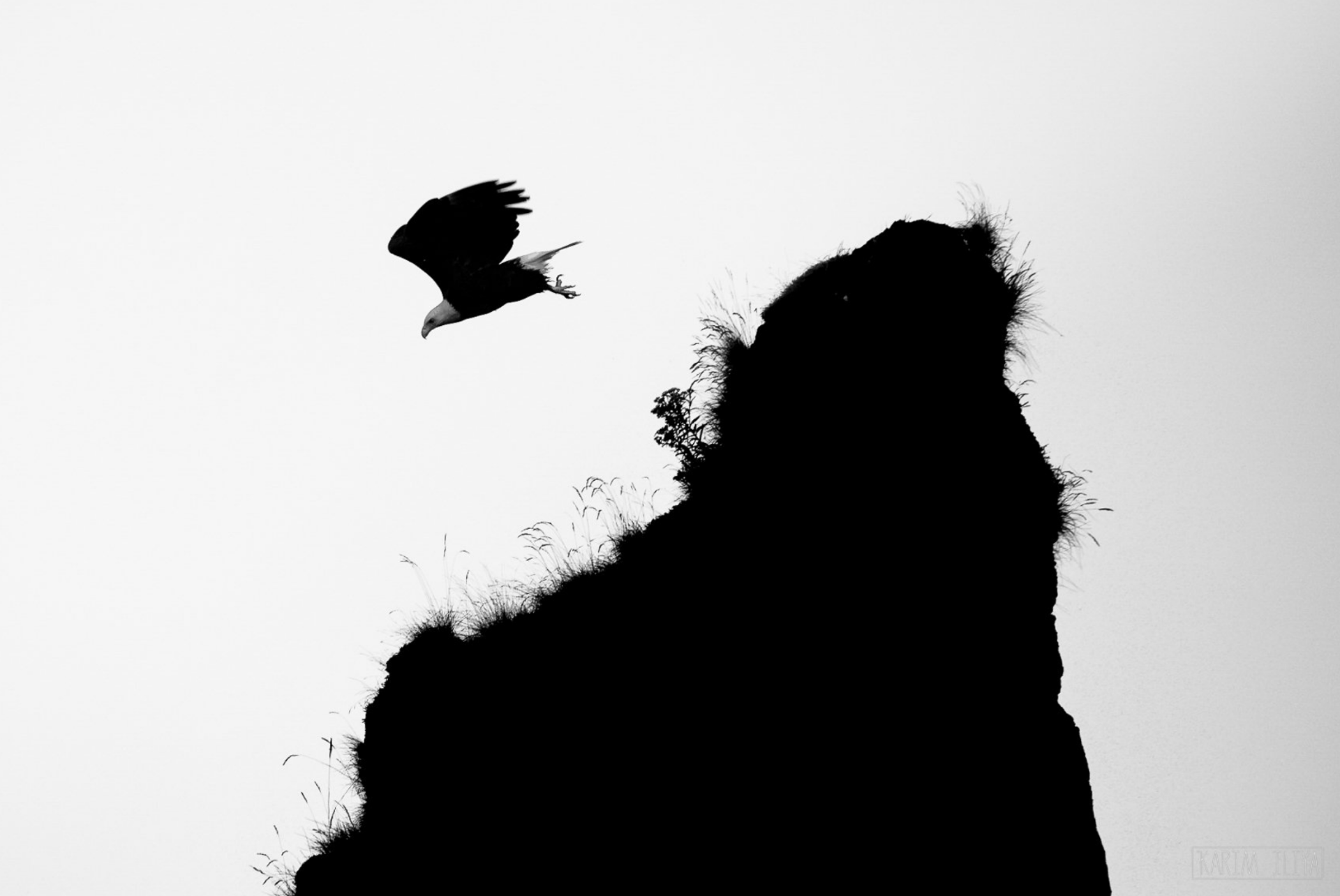
Photo by Karim Iliya
Born in a district of West London known as Hammersmith, Karim left the U.K. with his family when he was around six months old. He grew up traveling around the world, and was raised in Turkey, Bahrain, India, Korea, and Abu Dhabi, and completed his last year of high school in the U.S.
Karim became interested in USF when he visited his brother and fellow Don, Raja Iliya, on campus one summer. “It was a beautiful sunny day in San Francisco,” says Karim. “We skateboarded down through Outer Sunset to the beach. And I thought this is a nice city, I could enjoy this lifestyle.”
Eva and Karim met freshman year in a rhetoric class at the University of San Francisco. He was the one to convince the Czech national to switch her major from international studies to his major, media studies. As a student athlete on USF’s track team, Eva had to balance her studies and training, but found it difficult at times to say no to Karim. “I remember he would be like, ‘Let’s go listen to raindrops! And let’s go and explore the woods!’ and all these very pure ideas — very spontaneous and playful,” she says.
While at USF, Karim started a photography club and a beatboxing club. He also won first place two years in a row for “harmonica beatboxing” at USF’s talent show. “People seemed to really love that,” he says. “I think I’ll be the first beatboxer in space.”

Karim Iliya. Photo by Cat Gundry Beck
Karim reflected on how USF shaped his life after college. “We were in the stage of the world where you had to get a degree, it didn’t really matter what the degree was in, you just had to get a degree,” he says. “That’s changing. Now, you don’t need to get a degree to do stuff quite so much anymore. But what I found really impactful was being around very intelligent, educated people who were constantly learning. And so that was a great period of growth, where I think I became, you know, a more informed person on how the world works and different viewpoints. So that was one thing that I think had a big impact, rather than just going right into the world.”
“I would never have guessed he would be going to the moon,” says Media Studies Professor Vamsee Juluri. “I thought he had the makings of a true global citizen, but in a cultural, expressive, or artistic sense… Truly thrilled that he is on this very unique mission, and I hope he returns to USF to share his stories.”
Karim worked as a teaching assistant for astronomy Professor Aparna Venkatessan, helping with celestial night observations. When he was chosen for dearMoon, he called her to share the great news. “I knew great things were ahead for him because he’s so passionate and curious and engaged,” says Venkatessan. “So I figured sooner or later passion and opportunity would combine. But I am beyond proud that he was selected to be on this mission — just bursting at the gills with pride.”
After graduating college at USF in 2012, Karim wanted to continue his world adventures. “I felt very comfortable in different places without a real plan,” he says. “And I had this skill that could be applied in different locations, which is photography and video. So I kind of just went with opportunities that made sense.”
His first stop was Japan for around a month and a half, before realizing how expensive it was. “It was amazing, and then I ran out of money,” he says. So he hopped over to Cambodia, and lived there for five months with a friend. “I could just sell a print, or do some kind of thing every once in a while. And that would give me plenty of money to live in Cambodia.” For a while he traveled around Southeast Asia, unsure where he would land.
In his childhood, his family often visited Hawai’i where he and his brother would dream about swimming and taking photos in the water. In 2014, he moved to Haiku, Hawai’i to make that dream a reality. “I met someone on the beach who had told me that they could get me a job at a whale watching company,” he says. “And then I’d be able to get in the water and photograph humpbacks.” This turned out to not be true however, as the state requires special permits to swim with protected species. He got a job as a snorkel instructor on a whale watching boat, but it didn’t satisfy his urge to get closer to the whales.
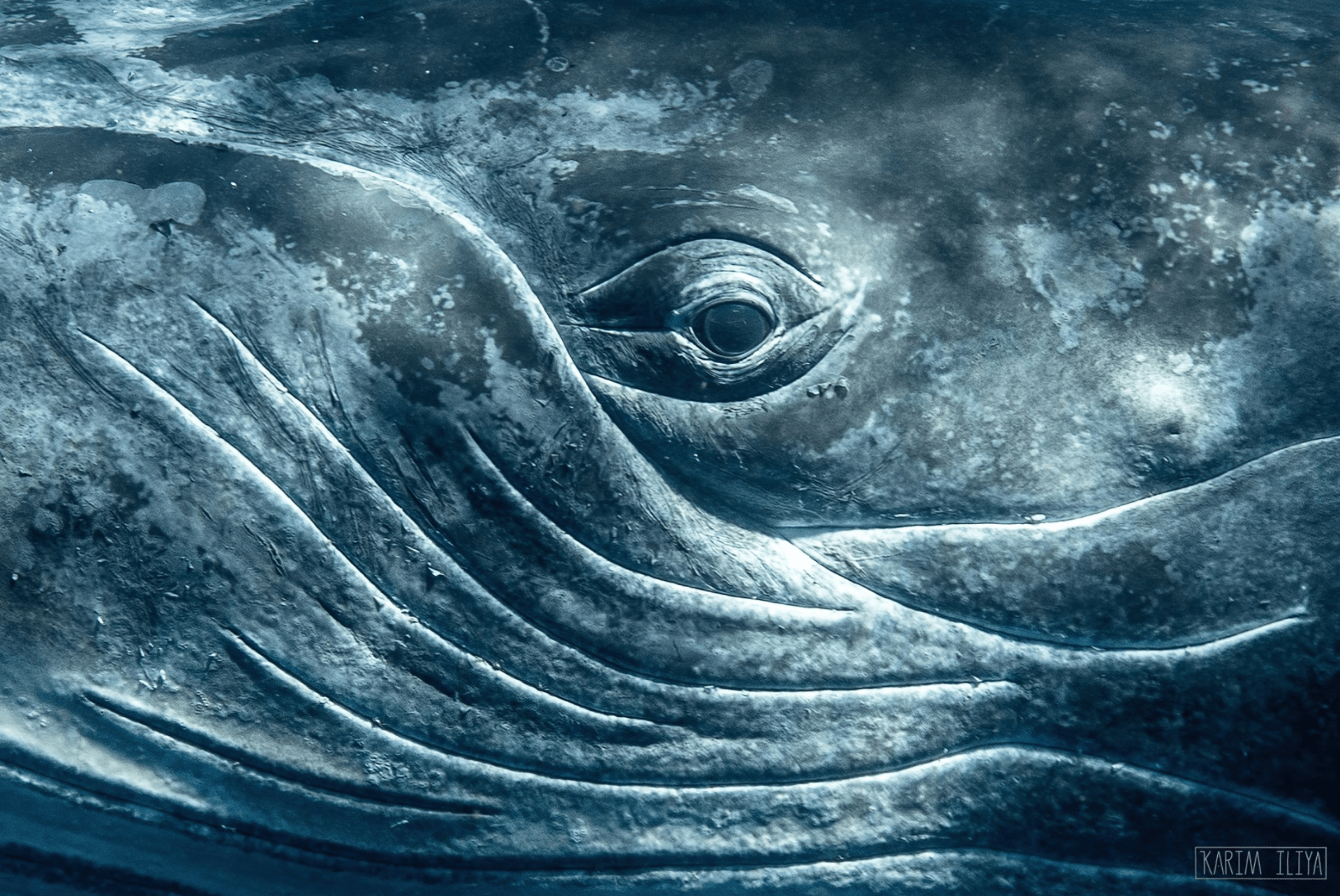
Photo by Karim Iliya
To supplement his income, he did commercial photography of portraits and weddings, which wasn’t exactly what he wanted to be doing, but it helped pay the bills. In his free time he would photograph the things he actually wanted to take pictures of: “bugs and wildlife and surfing.” It was these photos that he would showcase, not the pictures he was actually getting paid to take. “People got to know me for my work with volcanoes and whales and turtles and nature, instead of the stuff that I was doing purely for money,” Karim says. “And I think that set me on the course that I’m on now. And it has taken me all around the world to see all kinds of crazy things.”
Eventually, he found out that he could swim with humpback whales in Tonga without a permit and he was finally able to photograph them up close in 2016. These photos ended up in a two page spread in National Geographic, attracting more attention for his work. “People kept seeing these photos and asking me, ‘How do I do this?’ I contacted the boat captain and the woman who had the house and cooks the food, and the taxi drivers and organized all the logistics, and basically set up this trip to bring other people,” he explains. “And through the process of working with different captains and different guides over the years, I learned about whale behavior and how to basically guide people in the water.”
Karim founded Dance With Whales as a way to set up trips for tourists visiting Tonga and French Polynesia. He guides group swimming tours with whales, marlins, and sea lions while continuing his underwater photo shoots. “I know that not everybody can go out across the world and spend the money to swim with whales,” he says. “So hopefully what I can do is bring those images to other people who don’t have that opportunity so that they can also experience that… My hope is that it kind of changes their perspective and their outlook on the world.”
Karim won National Geographic’s 2017 Nature Photographer of the Year award for his photo of a dramatic, fiery spray of lava during a volcanic eruption in Kalapana, Hawai’i. In 2021, he won Marine Conservation Photographer of the Year for his aerial photo of a fishing village in Panama.
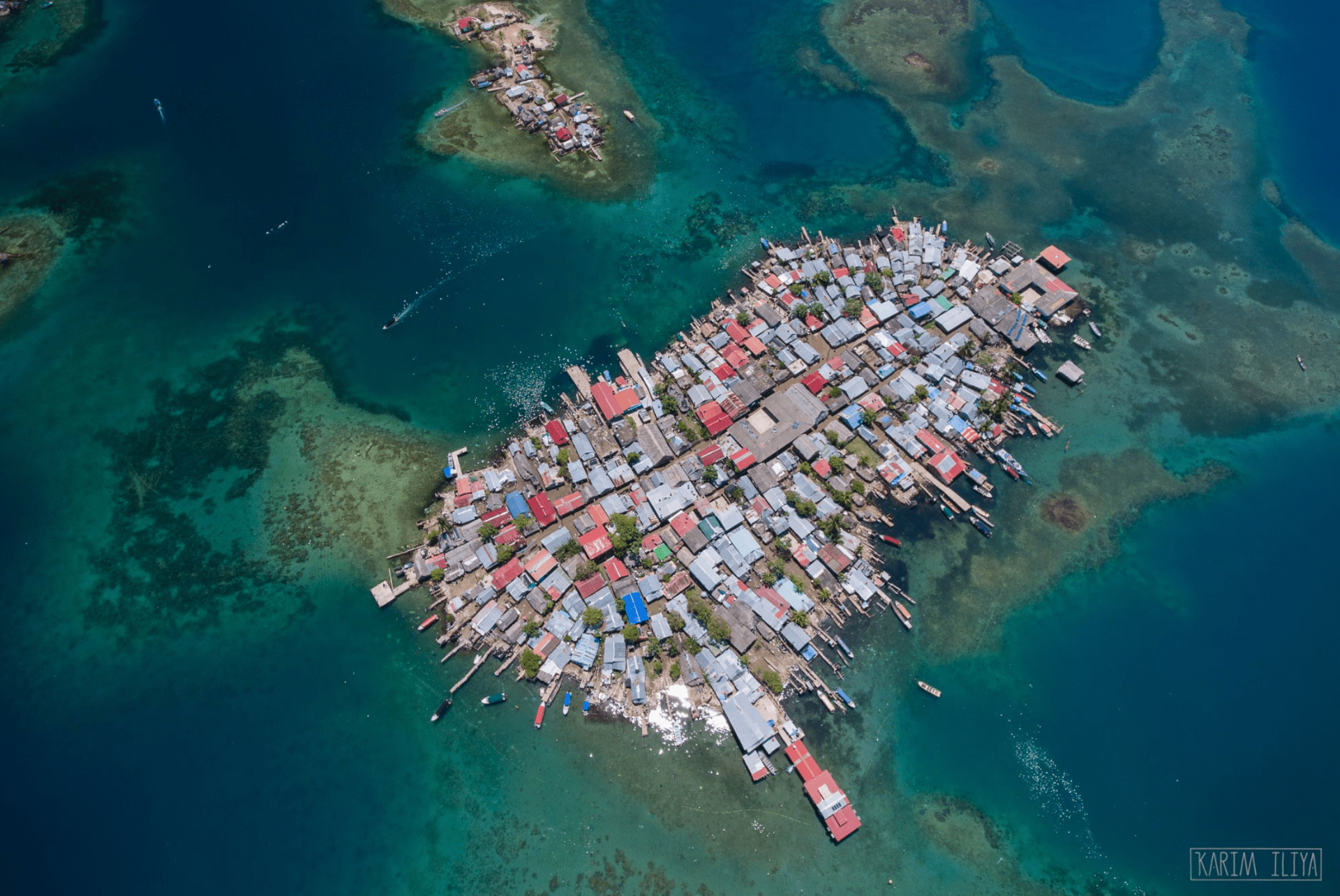
Photo by Karim Iliya
Eventually, after growing tired of being cooped up in Hawai’i during the pandemic, he was looking to move somewhere more mainland, like Canada. But in March 2021, during the eruption of the Fagradalsfjall volcano, Karim rushed to Iceland. “I was seeing these photos of this volcano in Iceland and I was just thinking, ‘I have to get out there.’ And I was ready to book a ticket that night,” he says. His three week trip to Iceland quickly turned into a three month trip, and he decided to move to Reykjavik. “I’ve been there many times, it’s a beautiful place full of amazing nature,” he says. “Good food, nice city, terrible weather.” In October 2022, Karim married his wife Björk Brynjarsdóttir. The two met at an art festival in Iceland in 2016, and stayed in touch over the years.
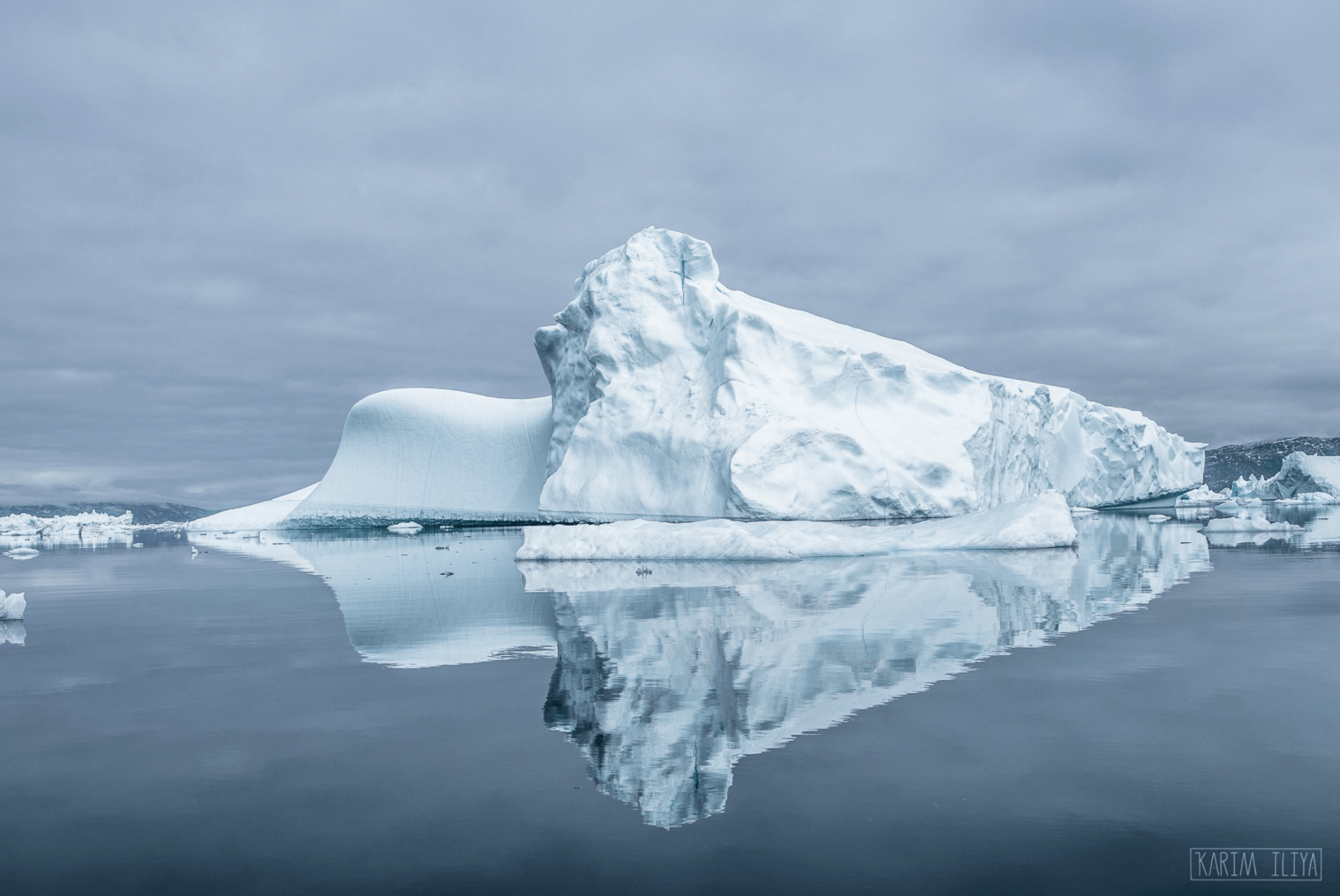
Photo by Karim Iliya
In 2022, Karim started a non-profit Kogia (pronounced ko-gi-ah) with his cousin, Nessim Stevenson. Named after the genus for sperm whales, Kogia provides a library of high-quality nature photos and videos for environmental conservation activists to use in their work. Karim and his team of five shoot the photos and video, and provide them for free to environmental activists working to preserve the places and creatures depicted.
Karim had long been licensing his photos for large companies to use, but when smaller organizations with lower budgets approached, he would typically let them use his photos for free. He realized there could be a better system for low-budget groups to get access to high-quality media, and thus Kogia was born. “I’m planning to build that out bigger so that it can help as much as possible for all of the people who are doing great work but don’t have all of the tools they need,” he says.
Karim sees his work as a way to connect people back to their planet. “One of the most important things for the environmental movement was the Apollo 8 photo… “Earthrise”… That photo basically kick-started and galvanized the environmental movement,” he says. “And my dream would be to take imagery that has a similar effect, that gets people excited about our planet, because people think going up into space is all about going away and going somewhere else. But it’s really about our planet, our system.”
This drive for environmental activism through photography was his main goal behind joining the dearMoon crew, which wasn’t an easy task.
In the 2021 announcement video for the dearMoon application, which featured a cameo by SpaceX founder Elon Musk, Maezawa specified that interested people must consider themselves artists, and fit two (somewhat vague) criteria. They must use the trip to the moon as a way to “push the envelope” in their field, and they must “support other crew members.”
Applicants were asked to send in videos of themselves explaining why they want to go, and what they would do with the experience. Over one million people applied from all over the world. Karim sent in a three minute clip of himself talking about his photography and his obsession with the moon. “My whole life I’ve looked up at the moon and thought, ‘while it is so far away, it is also so close,’” he says in a “Meet the Crew” video. He made it to the second round, the third, and then the final round. Along the way, he was interviewed on Zoom, completed writing assignments, and passed a medical check and a psychological examination. The entire process took about a year in total — all for a shot at the moon.
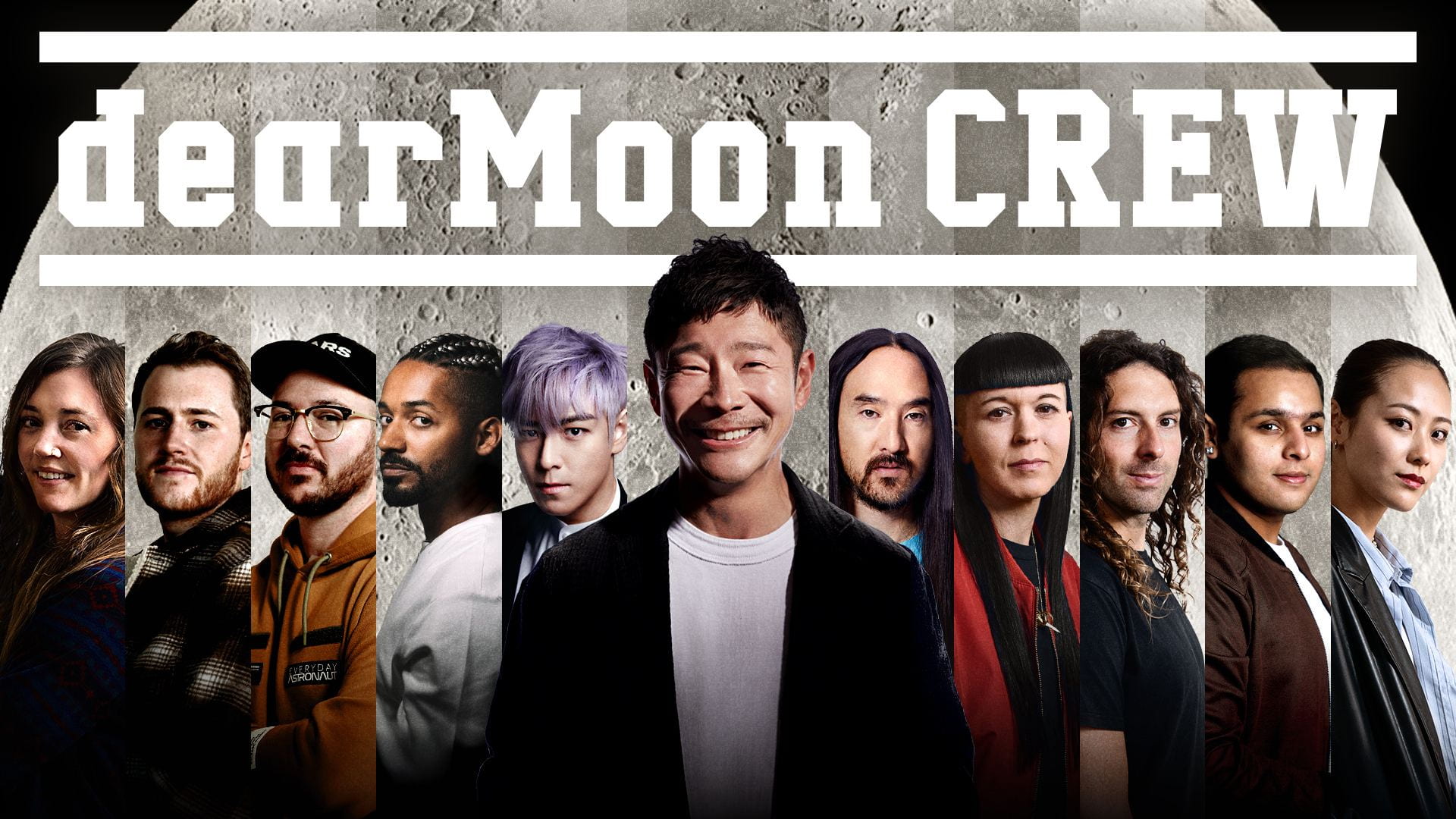
Maezawa, who has flown on a Russian space capsule to the International Space Station before, made headlines in 2020, for announcing his “girlfriend contest” on Twitter. Any woman over the age of 20 would be eligible to apply to be the “first woman to the moon” and win a seat on his SpaceX flight, with the endeavor being made into a “match making documentary” called Full Moon Lovers. Maezawa later backed out of the contest due to “personal reasons,” but says that over 27,000 women applied.
When Karim found out he had made it into the dearMoon project, he was on a farm in Argentina. He was so excited he began running through the nearby fields. “I had a lot of energy to try and figure out how to get that out. How do you release that?” he says. “I’m still processing the whole thing.”
“Knowing Karim, he is this wonderful, spontaneous soul, so it’s kind of not surprising that Karim is going there,” says Eva. “I feel the universe is giving Karim all the fruit of the cosmos to achieve what’s impossible… He’s just unstoppable and ambitious. He’s not afraid to do what he loves.”
Among those joining Karim will be other photographers, filmmakers, and actors. A former Olympic snowboarder and a professional dancer serve as backup crew members. Notable names are Steve Aoki, a music producer and DJ; Yemi A.D., a choreographer known for his work with Kanye West; and rapper T.O.P from the K-pop boy band Big Bang.
In a press release from dearMoon, Maezawa described his interview process that determined the crew: “I had deep conversations with each candidate, asking them about their childhood, why they are dreaming about going to space, what kind of challenges they would like to undertake,” he says. “They are all fantastic people. They all have beautiful smiles.”
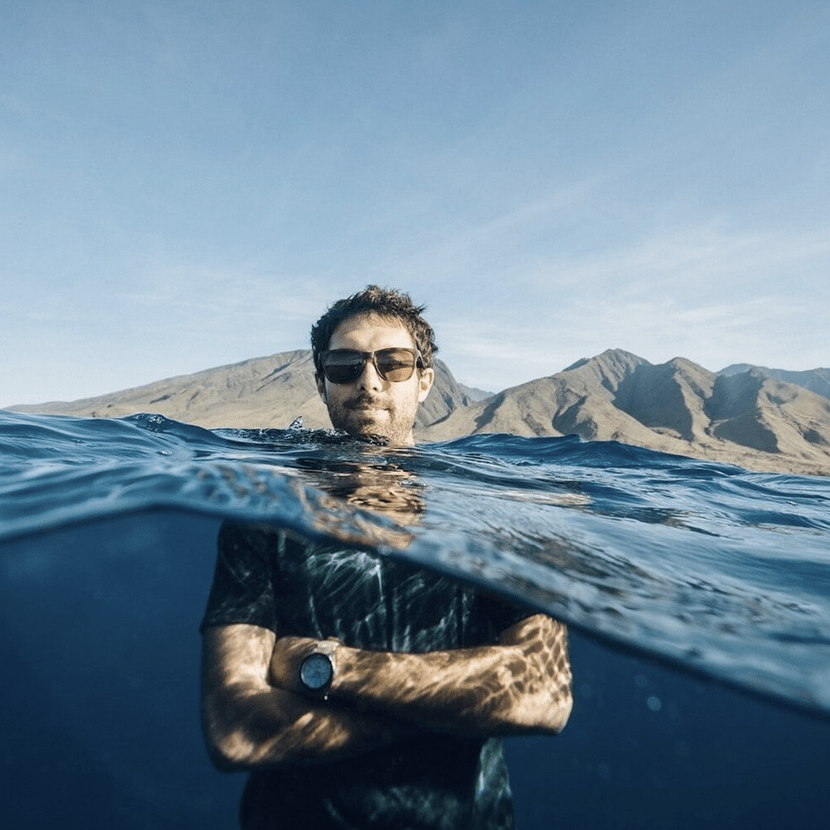
Karim Iliya. Photo by Raja Iliya, Inertia Expeditions
When we last spoke in May, Karim had not started any training for the trip yet, and could only guess at what that would look like. “My speculation is that there’ll be plenty of underwater things to learn how to move around… we’ll probably also go up on the vomit comet,” he says, referring to a plane that can simulate zero gravity. “This [the trip] will be one week, which means everything from eating, sleeping, bathing, and going to the bathroom. How do you do all of that in space?”
The crew will be wearing SpaceX designed spacesuits, a minimalist re-imagining of the famous NASA suits that brought men to the moon so long ago. The SpaceX suits are slimmer, reminiscent of a Formula 1 jumpsuit, and the new helmet wouldn’t look out of place on a motorcycle. The black and white suits are equipped with mics for communication, special gloves to use touch screens, and a cooling system. They connect to the seats in the rocket through an umbilical, which provides the electronics and gas to keep the suit functional and pressurized.
The rocket they will be taking is SpaceX’s Starship, a two-stage rocket that is the largest ever built. Made entirely from stainless steel, it spans 40 stories, with 39 engines that produce 16.7 million pounds of thrust. The second stage of the rocket, the part that will carry the dearMoon crew, can carry a maximum of 100 people and more than 100 metric tons of cargo at once.
That is, if it can get off the ground.
Though the dearMoon project is slated to leave Earth this year, the spaceship hasn’t reached the skies. A scheduled test flight on April 20 resulted in the Starship — which is meant to be reusable — exploding shortly after take off. It was an unmanned flight, and according to SpaceX the “rapid unscheduled disassembly” happened because the boosters failed to separate from the Starship. Karim was present at the launch (which coincided with his birthday) along with the rest of the dearMoon crew, and described seeing the Starship’s launch as “life changing.”
“I did not think that it would be as impressive as it was,” he says. “But when I was standing there, eight kilometers away, and I could hear how loud the sound was, and feel the power… I mean, this is the pinnacle of humanity.”
Karim says that the disassembly did not bother him or make him nervous. “The goal was to get it off of the ground, off the launch pad, and they did that,” he says. “Building rockets is a complicated thing. I think I will be nervous going and strapping myself on to a rocket flying into space,” he says. “Space travel is hectic, even when it’s very safe.” Other SpaceX ships like the “Falcon 9” or “Dragon” have made hundreds of successful flights and “reflights,” but neither are as big as Starship.
While the launch date for the dearMoon crew is still unknown, Karim looks forward to his trip to the stars. “As a kid I wanted to go to space, and then I took a different path in life. And I said, ‘Okay, next life I’ll do that,’” Karim says. “So to actually find out that this opportunity came around… despite having taken an unconventional route to get to space, that’s really exciting.”
“He’s coming into these possibilities with such a pure mind and without expectations,” says Eva. “He’s also the child of the universe, so I’m not surprised that it’s happening to him. Sometimes I walk down the mountains and I see the full moon and I’m like, ‘Karim is going there.’”
“It is really Terra Nova, you know, we don’t know how this is all going to go,” says Venkatesan. “There’s going to be a lot of joy and adventure and uncertainty. I just remember him, whether walking the hallways or in class, as just such an explorer.”
This sense of exploration is what has driven Karim throughout his life, as well his own ideas on luck and hard work. “I know that I’m incredibly lucky,” he says. “Of course, I know people who are incredibly lucky and they are content to go through life in a more simplified way. I have strived to go through and have big goals and big dreams, and have tried to use as much as what I’ve been given in order to aid me in that quest.”
“I spent my whole life on this planet, and seeing it in little tiny pieces to try to tell its story,” Karim says. “To have this opportunity to look at the whole planet in one view is very appealing to me, and I hope that it will allow me to reframe and photograph it in a way that tells the bigger story of life on Earth.”
This article was written by Savannah Dewberry and edited by Professor Teresa Moore for Arts Reporting and Review, spring 2023.
ABOUT THE AUTHOR:
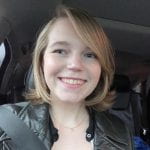 Savannah Dewberry is a journalism student at the University of San Francisco. In addition to MediaZine, she is the Chief of Copy for the SF Foghorn, and an intern for the SF Times. She is originally from the East Bay, and enjoys textile crafting.
Savannah Dewberry is a journalism student at the University of San Francisco. In addition to MediaZine, she is the Chief of Copy for the SF Foghorn, and an intern for the SF Times. She is originally from the East Bay, and enjoys textile crafting.

